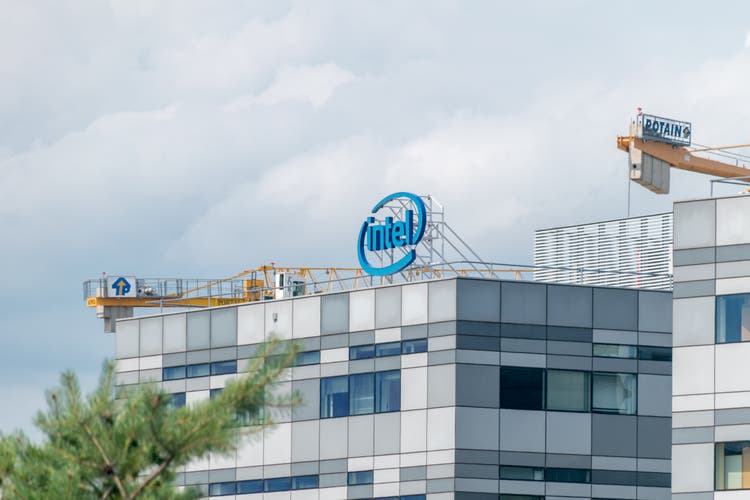RobsonPL
As of my writing this, Intel (NASDAQ:INTC) is down roughly 36% year to date. Investors have brutally punished the stock for missing earnings estimates and lowering guidance. Intel’s history of overpromising and underdelivering has driven many investors to throw in the towel, taking Intel’s valuation lower than the market at large. However, as the stock has fallen, yield-hungry investors are now stepping in, lured by INTC’s roughly 4.3% dividend yield. To cut to the chase, is INTC a good buy, or is it a value trap?
The Good:
Earlier this month, the Biden Administration signed the CHIPS and Science Act, which immediately allocates tens of billions of dollars to boost domestic semiconductor manufacturing. The US got burned during the pandemic by chip shortages and the reliance on China for chips combined with Russia’s aggression in Ukraine got lawmakers to put two and two together to realize that concentrating such a high percentage of global chip manufacturing in countries with frozen conflicts might not be a good idea. After the legislation was passed, Intel put out a press release praising the move. Intel is building a $20 billion manufacturing facility in Ohio and $20 billion more for two facilities in Arizona. Canada-based Brookfield Infrastructure Partners (BIP) is helping fund these – the two companies inked a deal for BIP to give Intel as much as $30 billion in capital.
As far as friends go, the US government is a good one to have. The CHIPS and Science Act is unquestionably good for Intel stock as the US government has a vested interest in Intel succeeding. Intel has A-rated credit and government support, so while there’s some downside in investing in the stock, the company lacks the worst aspects characteristic of money-losing value traps (dilution, losses, bankruptcy risk, etc.). Intel is definitely going to need to pony up for capital expenditures on a recurring basis, but the US government is happy to help, as is BIP. Another interesting possibility for INTC stock is whether its domestic manufacturing capabilities would serve as a hedge in the future against China invading Taiwan.
The Bad:
Intel missed earnings badly for the last quarter. Not only did they miss earnings, but they had to lower full-year guidance as well. Dividend investors have piled into Intel on the idea that they’re cheap based on price to earnings, but estimates for earnings are now being revised down. This is a classic issue when you buy cyclical stocks – people get sucked in by big dividends and low PE ratios, but then the cycle turns and the stock ends up being expensive, while the dividends are often cut in severe downturns.
While Intel is cheaper than the market at large, analyst estimates have come down, so the stock isn’t that cheap. Analysts now expect $2.59 in 2022 earnings for the stock, $2.01 in 2023, and $2.23 in 2024. For 2023 that’s about a 17x PE ratio. And if these earnings estimates are correct, that’s essentially zero growth until the end of 2024. A quick glance at INTC’s income statements shows the extent of their problems – five years ago the company was earning twice as much money! While Intel could turn around the business, it’s likely to take a fair amount of time. Investors should consider whether they’re getting enough compensation for their risk and time at the current price.
The Ugly:
Intel is losing market share, mainly to AMD (AMD). This is a continuation of a long line of issues with Intel, which lost its dominant market position over time through complacency. High-profile failures over the last 20 years in the mobile market and in TVs, toys, and web hosting have not helped. Intel is now under new management. Since early 2021, Intel’s new CEO is Pat Gelsinger, who was previously CEO of VMWare. Gelsinger created some controversy last year with some friendly holiday trash talk, saying AMD was “in the rearview mirror.” Since then, the two stocks are down roughly the same amount. However, over the last five years, AMD has out-competed Intel and taken market share from them.
A bigger problem for investors is that Intel badly missing earnings guidance is not a first-time occurrence. Intel hasn’t done a lot over the past 10 years – the company has returned about 7% annually including dividends since 2012, while the S&P 500 (SPY) has returned a historically blistering 14% annually. Intel’s management feels confident that the third quarter will be the bottom for them, while Wall Street has a more dour outlook. Ugly might be a bit harsh as Intel’s stock performance isn’t terrible in absolute terms, but the company’s performance has lagged far behind its Silicon Valley and Nasdaq peers.
Bottom Line
Are investors getting enough compensation for Intel’s risks at ~17x earnings and a 4.3% dividend yield? After digging a bit into the numbers, I don’t think you’re getting enough compensation here, so I’d hold off on buying the stock. With earnings down and not expected to grow much for a couple of years, I think it’s too soon to buy INTC stock. Investors should consider checking back in if the company trades for 10-12x earnings. Depending on the path of earnings, this would likely be around $25 per share. Otherwise, I think you’re still paying too high of a price for a business that’s struggling to get earnings back to the levels they used to be at. If you’re looking for a related play that can profit from the CHIPS and Science Act, take a closer look at BIP stock, which is partnering with Intel to put up money for the new factories.


Be the first to comment